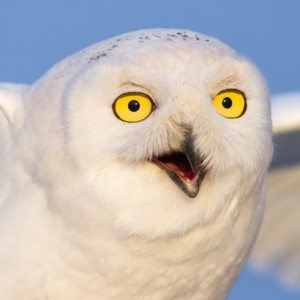Red pins are females, blue pins are males.
2017-18 Owls
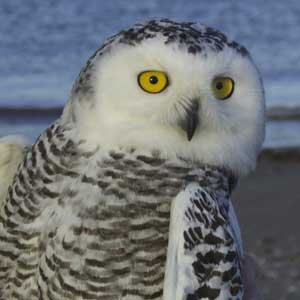 Hilton – 2017
Hilton – 2017
This juvenile female was tagged Nov. 24, 2017, by Tom McDonald at Braddock Bay, just west of Rochester, NY. Her transmitter was underwritten by generous donations by the public to Project SNOWstorm.
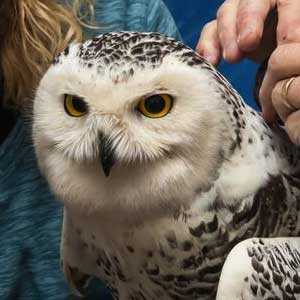 Sterling – 2017
Sterling – 2017
An juvenile female, Sterling was caught Nov. 26, 2017, by Tom McDonald and Melissa Mance Coniglio at Fair Haven Beach on Little Sodus Bay, Lake Ontario, just north of the town of Sterling, NY. Her transmitter was underwritten by generous donations by the public to Project SNOWstorm.
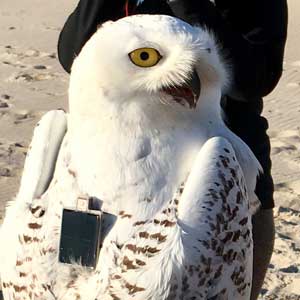 Island Beach – 2017
Island Beach – 2017
An immature male, this snowy owl was the first Project SNOWstorm bird tagged in New Jersey, and was named for Island Beach State Park, where he was captured Nov. 29, 2017, by Mike Lanzone of Cellular Tracking Technologies. Island Beach’s transmitter was underwritten by a gift from New Jersey Audubon’s Cape May Bird Observatory.
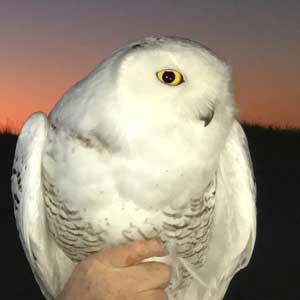 Lenape – 2017
Lenape – 2017
This immature male was tagged at Island Beach State Park in New Jersey on Nov. 29, 2017 by Mike Lanzone, the second owl tagged there that day. Lenape’s transmitter was underwritten by generous donations by the public to Project SNOWstorm.
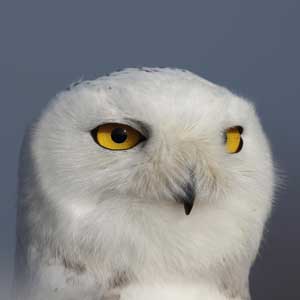 Higbee – 2017
Higbee – 2017
Higbee, a juvenile male, was banded Dec. 5, 2017, by Mike Lanzone from CTT, Tricia Miller from Conservation Science Global, and David LaPuma from New Jersey Audubon at the South Cape May Meadows, a Nature Conservancy reserve in Cape May, NJ. He was named for nearby Higbee Beach, one of the most famous birding spots in the East, and the Nature Conservancy generously sponsored his transmitter. Unfortunately, Higbee was killed by a vehicle collision during a snowstorm on Jan. 4, 2018, near Stone Harbor, NJ.
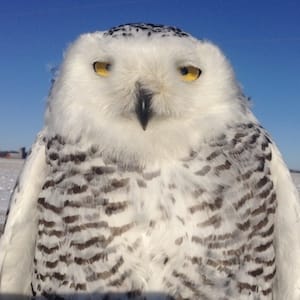 Badger – 2017
Badger – 2017
Badger, a very dark immature female, was trapped just northeast of Freedom WI on 30 December 2017. This is the 57th owl fitted with a transmitter by project volunteers and funds for this transmitter were donated by the Natural Resources Foundation of Wisconsin and the Wisconsin Public Service Foundation.
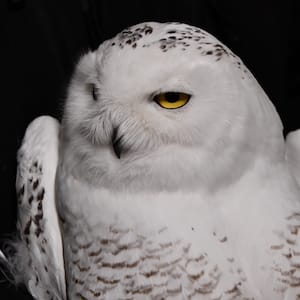 Arlington – 2018
Arlington – 2018
Arlington, a juvenile male, was caught Jan. 4, 2018 just south of the village of Arlington, WI. Arlington was caught on the former Arlington Prairie at the Arlington Agricultural Research Station that is adjacent to Madison Audubon Society’s Goose Pond Sanctuary. Madison Audubon Society members provided funds for the transmitter.
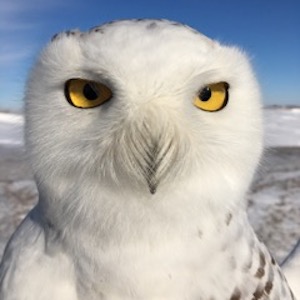 Ashtabula – 2018
Ashtabula – 2018
This juvenile male was tagged Dec. 5, 2017, by Matt Solensky from the U.S. Geological Survey, just south of Lake Ashtabula near Sanborn, North Dakota, and has spent the winter largely on the ag fields and prairies surrounding local lakes and marshes. Ashtabula’s transmitter was underwritten with generous donations from the public to Project SNOWstorm.
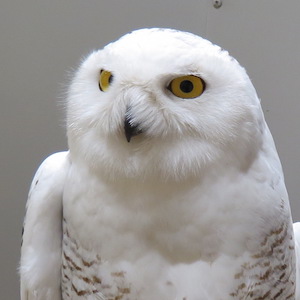 Bancroft – 2018
Bancroft – 2018
This juvenile male was tagged Jan. 16, 2018, by Gene Jacobs of the University of Wisconsin-Stevens Point on the Buena Vista Wildlife Area in central Wisconsin, where he is hunting agricultural fields and preserved prairie. Bancroft’s transmitter was underwritten by a grant from the Wisconsin Society for Ornithology.
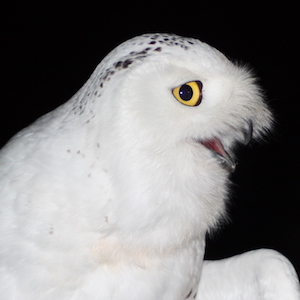 Austin – 2018
Austin – 2018
A juvenile male, this bird was trapped at Green Bay Austin Straubel International Airport in Wisconsin by volunteer falconer Frank Ujazdowski, tagged by Gene Jacobs from the University of Wisconsin-Stevens Point, and relocated to the Buena Vista Wildlife Area in central Wisconsin. His transmitter was underwritten by a grant from the Natural Resources Foundation of Wisconsin.
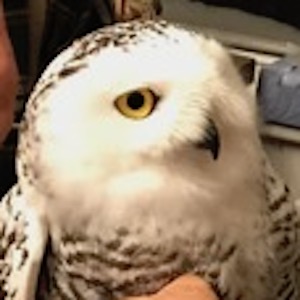 Stella – 2018
Stella – 2018
This juvenile female was captured by a four-person SNOWstorm team Jan. 15, 2018, on the south shore of Amherst Island, Ontario, at the northeastern end of Lake Ontario. She is part of an ongoing study to determine the extent to which 26 large wind turbines, being installed on Amherst, impact the movements of wintering snowy owls there. Her transmitter was underwritten with generous donations from the public to Project SNOWstorm.
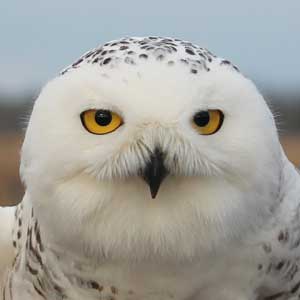 York – 2018
York – 2018
York was a juvenile male captured Dec. 6, 2017, at the Portland International Jetport by USDA Wildlife Services, and tagged by biologists with the Biodiversity Research Institute. He was relocated to Rachel Carson National Wildlife Refuge in southern Maine and released Dec. 7, 2017. After exploring the coast and making a brief flight inland, York flew to the shoreside community of Wells Beach, where he was electrocuted Dec. 9 after landing on a poorly designed transformer — an example of the kinds of dangers facing snowy owls when they come south from the Arctic. York’s transmitter was underwritten by generous donations from the public; it was recovered and will be reconditioned and reused.
 Emerald – 2018
Emerald – 2018
This juvenile female was captured by a four-person SNOWstorm team Jan. 15, 2018, on Amherst Island, Ontario, at the northeastern end of Lake Ontario. She is part of an ongoing study to determine the extent to which 26 large wind turbines, being installed on Amherst, impact the movements of wintering snowy owls there. Her transmitter was underwritten with generous donations from the public to Project SNOWstorm.
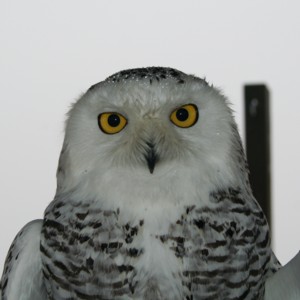 Sinepuxent – 2018
Sinepuxent – 2018
Sinepuxent, a juvenile female, was banded Jan. 28, 2018, by Steve Huy. She’s named for Sinepuxent Bay, a coastal bay along the northern end of Assateague Island in Maryland where she was trapped. She is the first owl to receive a transmitter in Maryland since “Baltimore” was released in 2015. The Delmarva Ornithological Society generously sponsored Sinepuxent’s transmitter.
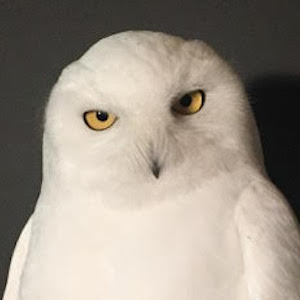 Pennington – 2018
Pennington – 2018
At at least five years of age (based on wing molt), Pennington is the oldest owl we’ve tagged as part of Project SNOWstorm. This almost pure white male was tagged Feb. 2, 2018, by Nova Mackentkley and Chris Neri near Pickford, in the Upper Peninsula of Michigan, just 2 miles (3.4 km) from Pennington. His transmitter was underwritten by donations from the public.
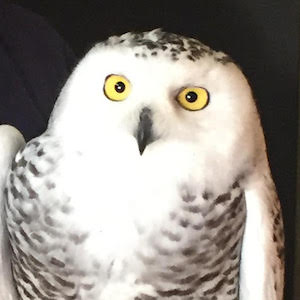 Pickford – 2018
Pickford – 2018
Pickford, a juvenile female, was tagged Feb. 2, 2018, by Nova Mackentkley and Chris Neri near Pickford, in the Upper Peninsula of Michigan, just 2 miles (3.4 km) from Pennington. She was occupying the same winter territory used in 2015 by Chippewa. Pickford’s transmitter was underwritten by donations from the public.
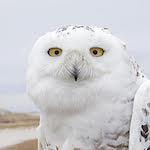 Logan – 2018
Logan – 2018
This adult female was first banded by Norman Smith as a juvenile at Logan Airport in Boston in April 2014. She was recaptured there Feb. 11, 2018, as a five-year-old, tagged and relocated for her safety to Sandy Neck Beach on Cape Cod. Her transmitter was underwritten by generous donations from the public.
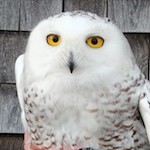 Manisses – 2018
Manisses – 2018
A juvenile female, Manisses was tagged on Block Island, RI, on Feb. 14, 2018, by Lauren Gilpatrick and Chris Persico from the Biodiversity Research Institute, in cooperation with the Nature Conservancy. Her name, pronounced mana-sees, was the original Native name for Block Island, and her transmitter was underwritten by generous donations from the public.
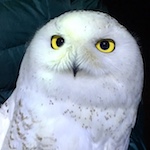 Hereford – 2018
Hereford – 2018
A juvenile male, Hereford was caught and tagged by Mike Lanzone and Trish Miller at Stone Harbor Point, NJ, on Feb. 12, 2018, at the mouth of Hereford Inlet. His transmitter was underwritten (as was Higbee’s) by a gift from the New Jersey chapter of the Nature Conservancy.
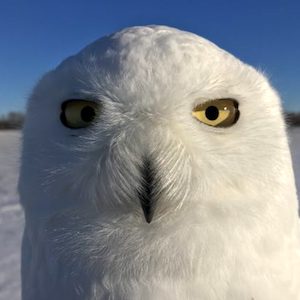 Pettibone – 2018
Pettibone – 2018
This adult male, tagged Feb. 10, 2018, in Kidder County, ND, by Matt Solensky of the U.S. Geological Survey’s Northern Prairie Research Center, is at least five years old. His transmitter was funded by generous donations from the public, and he was named for a nearby town.
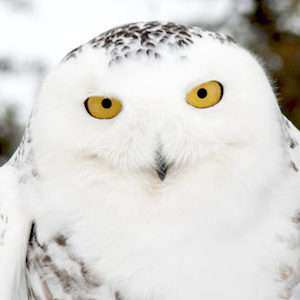 Gichigami – 2018
Gichigami – 2018
A juvenile female, Gichigami was tagged Feb. 10, 2018, by Nova Mackentley and Chris Neri at Whitefish Point, on the Upper Peninsula of Michigan. Her name is a rendering of the original Ojibwe name for Lake Superior, and her transmitter was funded by generous donations from the public.
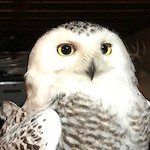 Straubel – 2018
Straubel – 2018
This juvenile female was trapped Feb. 21, 2018, at Green Bay-Austin Straubel International Airport by Frank Ujazdowski, tagged by Gene Jacobs of University of Wisconsin-Stevens Point, and relocated for her safety to the Buena Vista grasslands of central Wisconsin. Her transmitter was underwritten by an anonymous donor through the Fond du Lac Area Foundation and Fond du Lac County Audubon Society.
Returning Owls
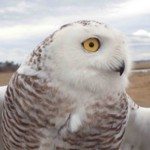 Chickatawbut – 2017
Chickatawbut – 2017
Chickatawbut is an adult female tagged March 8, 2017, by Norman Smith at Logan International Airport in Boston, Massachusetts. She was relocated to beach habitat near Salisbury, MA, and spent the remainder of the winter on the MA/NH coast. She was last detected May 5 in southern Quebec, but returned south in November 2017 after apparently nesting in the western Ungava Peninsula. (Photo ©Project SNOWstorm)
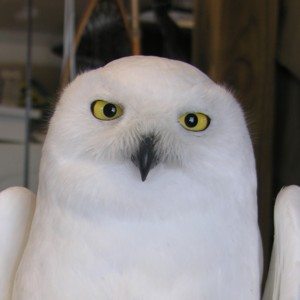 Hardscrabble – 2016
Hardscrabble – 2016
Hardscrabble was an after-third-year male (meaning he was at least four years old) that was tagged Feb. 22, 2016, by Tom McDonald near Hardscrabble Road in Cape Vincent, New York. This almost completely white, unmarked male weighed a robust 1,731 grams and had significant body fat. He moved north through southern and western Quebec, and last checked in April 28, 2016, along the east shore of James Bay. He summered (but did not nest) in the northern Ungava Peninsula during 2016, then migrated south too the Ottawa River Valley in Ontario, spending the winter of 2016-17 near Cobden, ON. Hardscrabble was last detected April 20, 2017, on the southeastern shore of James Bay, but returned south in December 2017. (Photo ©Tom MacDonald)
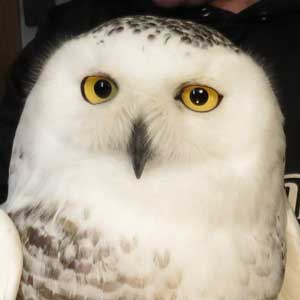 Wells – 2017
Wells – 2017
Wells is our third Maine owl, captured at Portland Jetport by USDA APHIS, tagged by our colleagues at the Biodiversity Research Institute and released Jan. 25, 2017 at Rachel Carson National Wildlife Refuge near Wells, ME. She is an adult female and weighed just over 2,000g. She was last detected April 21, 2017, heading north through southern Quebec, then returned in November 2017, having nested in the northern Ungava Peninsula. (Photo ©BRI)
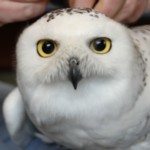 Brunswick – 2016
Brunswick – 2016
This adult female was caught at Brunswick Executive Airport in Brunswick, Maine, by a crew consisting of Scott Weidensaul of Project SNOWstorm and staff from the Biodiversity Research Institute and APHIS Wildlife Services. She was relocated to the Rachel Carson NWR on Jan. 13, 2016. She remained there much of the winter, then shifted south to the Isle of Shoals on the Maine/NH border. Her last contact heading north was April 28, 2016, on the Gaspé Peninsula in Quebec. She reconnected in February 2018 on the coast of New Brunswick. (Photo ©Rick Gray)
Baltimore – 2015
This fourth year male was banded as an immature by Steve Huy after being trapped March 14, 2014 by APHIS Wildlife Services at Martin State Airport in Baltimore, MD, and relocated to western Maryland. Baltimore was recaptured at Martin State Airport on Feb. 13, 2015, fitted with a transmitter and relocated to Assateague Island National Seashore, MD, on Feb. 14, 2015.
In 2015, Baltimore reappeared in December and spent the winter of 2015-16 on and around Amherst Island in northeast Lake Ontario, and was last detected March 27, 2016, just north of Lake Ontario. Baltimore checked back in for the first time on Christmas Day, 2016, and began uploading stored spring and summer data from his transmitter. Unfortunately, his transmitter failed before sending all of its data. Baltimore’s transmitter was sponsored by the Baltimore Bird Club. (Photo ©Chris Hudson)

